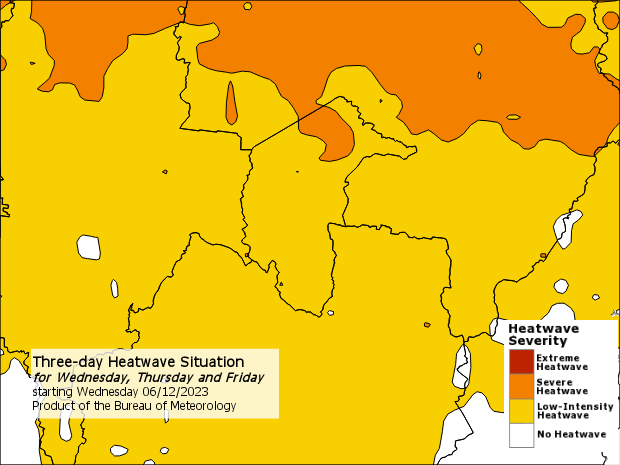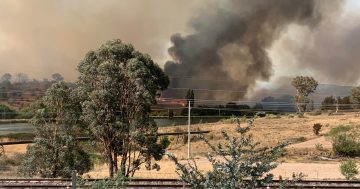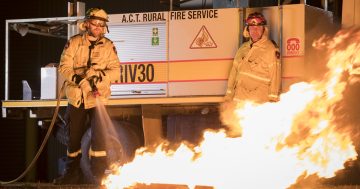
Consider only going outside during cooler parts of the day. Photo: ACT ESA Twitter.
Residents in the Belconnen, Gungahlin and Woden Valley areas have been urged to be extra vigilant of the impacts of heat after a severe heatwave warning was issued for parts of the ACT this week.
Canberra is already experiencing above-average temperatures, and the peak of the heat is expected this Friday (8 December).
But it’s not just maximum temperatures that cause a heatwave.
According to the Bureau of Meteorology, a heatwave is when the maximum and minimum temperatures are “unusually hot” over three days.
“A high overnight temperature can mean that the next day heats up quickly. There may be more hours of extreme heat,” the Bureau said.
“In heatwaves, hot nights make it harder to recover from the heat of the day. This puts more stress on the body.”
While the ACT won’t see the worst of the extreme heat, the extended periods of warmer weather can cause health issues, especially for vulnerable people.
The ACT Emergency Services Agency has advised Canberrans to consider ways to keep themselves cool, including keeping hydrated, staying inside during the hottest part of the day, and checking in with family, friends and vulnerable members of the community.
People have also been urged to know the signs of heat stress, also referred to as heat exhaustion.
These include headaches, dizziness, faintness, nausea and vomiting.
In babies, this can also include irritability, feeling very warm to the touch, sunken eyes, restlessness, floppiness and a reduced number of wet nappies.
First aid for heat exhaustion includes getting the person to a cooler environment, lying them down, using cool and wet towels around their neck and underarms, and drinking small sips of water.

Severe heatwave conditions will hit parts of the ACT, with low-intensity conditions for the rest of the Territory. Photo: BoM.
If heat exhaustion isn’t acted upon, it can progress to heat stroke, which is a life-threatening condition.
Signs of heat stroke can include fits, confusion, slurred speech, staggering, collapsing, profuse sweating or hot, dry skin, rapid breathing and a very high body temperature.




















